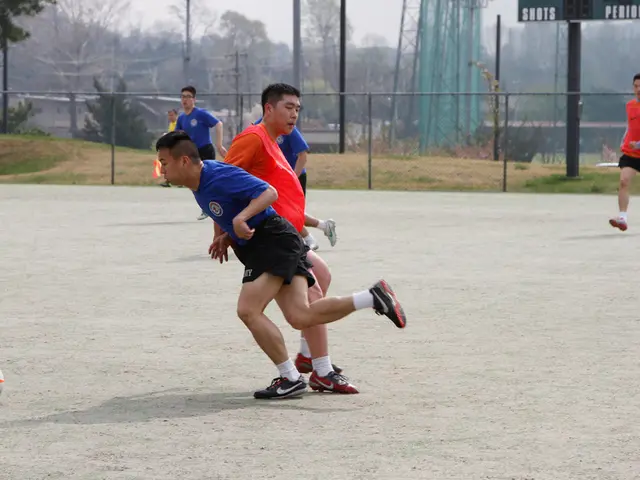Modifying the weight lifted leads to enhanced muscle fortitude, according to a research study.
Swap out those heavy weights and watch your performance soar, because that's exactly what researchers from the University of Lincoln in the UK are suggesting! They've shown that athletes can boost their athletic prowess not by piling on the pounds, but by varying the weight they lift during their training sessions.
The study, published in the Journal of Strength and Conditioning Research, states that training with less weight can help maintain or even improve performance while minimizing muscle fatigue.
Adults are advised to engage in muscle-strengthening exercises at least two days a week, which may include activities like push-ups, sit-ups, or weightlifting. For athletes, these exercises are crucial, especially for those who rely on muscle strength for their sports. However, recovery is just as important. By recovering fully, athletes can spend less time injured and more efficiently working out.
Traditionally, weightlifting exercises have been performed using percentage-based training (PBT), where weightlifters lift a percentage of their maximum weight. But researchers decided to try an alternative method, velocity-based training (VBT), where trainers measure the time it takes to lift a weight. Based on this measurement, trainers can adjust the weight accordingly for each session.
A group of 16 men with at least two years of weightlifting experience was divided into two groups. One group performed six weeks of training using PBT, while the other used VBT. The researchers determined each participant's maximum weight and instructed the PBT group to lift a predetermined percentage of that weight. Meanwhile, the VBT group underwent a series of warm-ups to measure their performance and progress. The researchers then adjusted the weight accordingly based on the VBT group's performance that day.
At the end of the training program, the weightlifters repeated a series of exercises, including a bench press, conventional deadlift, strict overhead press, countermovement jump, and squat press. The results showed that the weightlifters using VBT increased their performance more than those using PBT, even though they lifted less overall weight.
Dr. Harry Dorrell from the University of Lincoln's School of Sport and Exercise Science explained the benefits of VBT: "Traditional percentage-based training methods don't provide insight into how factors such as sleep, nutrition, or motivation affect an athlete's strength. However, velocity-based training allows us to see if an athlete is up or down on their normal performance and adjust the load accordingly." He continues, "It's about making sure the athlete is lifting the optimal load for them on that particular day. If you lift too little, you won't stimulate the body as intended, but if you lift too much, you'll be fatigued, which increases the risk of injury."
The study highlights the importance of understanding an athlete's current performance state and adapting training accordingly. By using VBT, athletes can achieve better results while reducing muscle fatigue and recovery times. This discovery could have significant implications for athletes and even those who engage in regular strength training exercises to maintain their health.
Incorporating velocity-based training (VBT) in fitness-and-exercise routines, such as weightlifting, may lead to a decrease in muscle fatigue and improved health-and-wellness, as highlighted by a study published in the Journal of Strength and Conditioning Research. This method, which measures the time it takes to lift a weight, offers insights beyond traditional percentage-based training by taking into account factors like sleep, nutrition, and motivation that affect an athlete's performance, minimizing the risk of weight-management issues or sports-related injuries due to fatigue.








